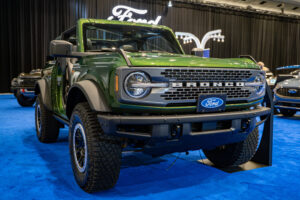MuscleCar Builds
Want more content like this?
Join the PowerNation Email NewsletterParts Used In This Episode
Chevrolet Performance
LS7 small block 7.0 liter 505 hp and 470 ft/lb torque, complete with wiring harness for ignition, fuel injection, and drive by wire throttle pedal assembly.
KnKut Performance Drills
Performance drill bit sets.
March Performance
Black powdercoated serpentine belt drive system complete with A/C compressor and power steering pump for LS-7 motors.
TCI Automotive
4L60E Super Street fighter transmission with LS motor bellhousing, 10" torque convertor, locking dipstick, performance transmission fluid cooler, TCU and wiring harness.
YearOne
18x9 Silver Honeycomb replica wheels. 18x11 Silver Honeycomb replica wheels.

























